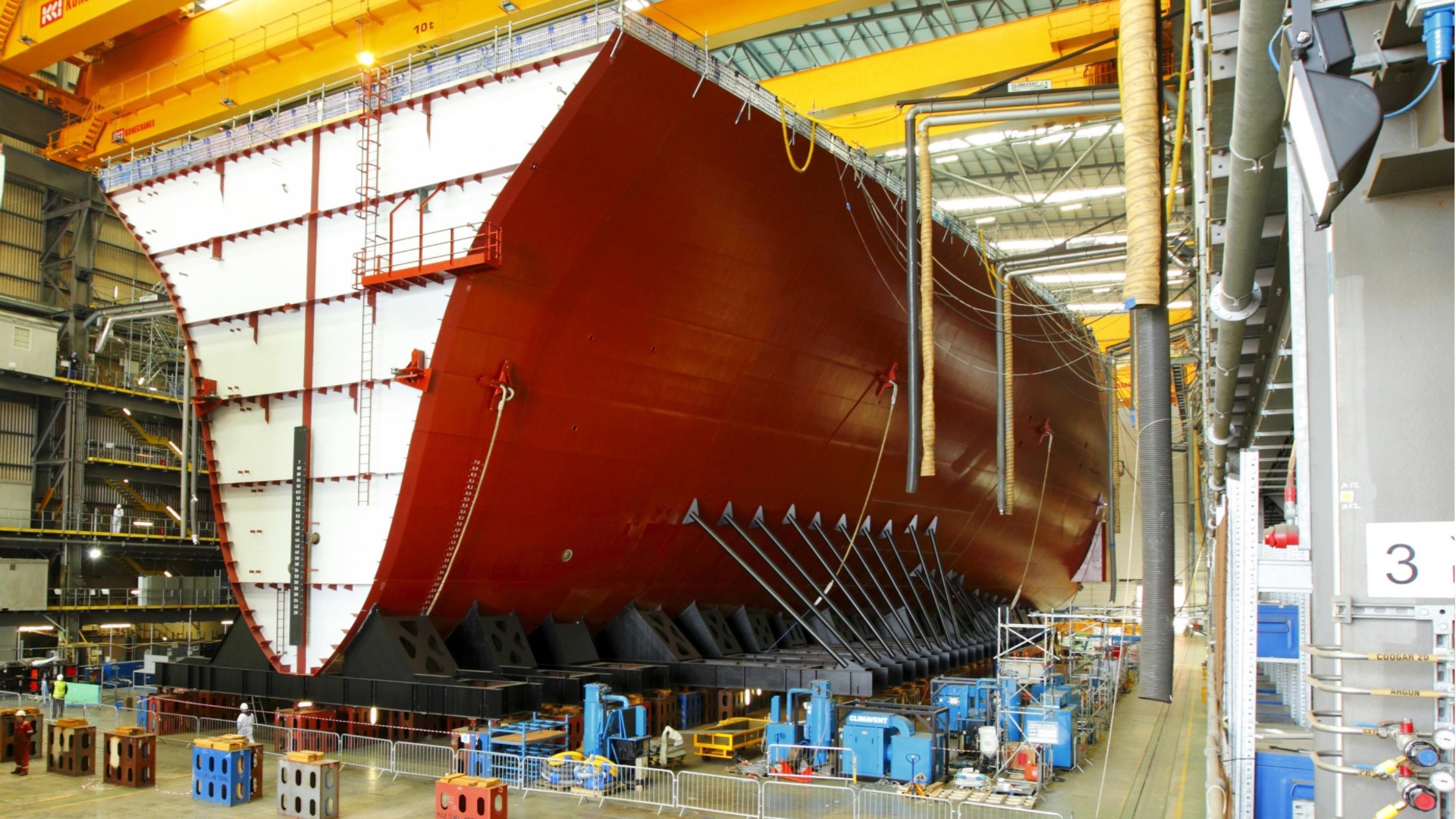Machinist
Machinist
Career Overview
A machinist uses specialized machinery to produce or fix parts or equipment. Anthony, the machinist featured in the video, fixes parts for airplanes.
Education
Machinists and tool and die makers typically are trained on the job. Some learn through training or apprenticeship programs, vocational schools, or community and technical colleges. Although machinists typically need just a high school diploma, tool and die makers may need to complete courses beyond high school.
Future Outlook
Employment of machinists is projected to grow 4 percent from 2019 to 2029, about as fast as the average for all occupations.
Work Environment
Machinists and tool and die makers work in machine shops, toolrooms, and factories. Although many work full time during regular business hours, overtime may be common, as is evening and weekend work.
Recommended High School Courses
- Math
- Physics
- Communication
- Trade-related courses
- English
- Active Listening - Giving full attention to what other people are saying, taking time to understand the points being made, asking questions as appropriate, and not interrupting at inappropriate times.
- Complex Problem Solving - Identifying complex problems and reviewing related information to develop and evaluate options and implement solutions.
- Coordination - Adjusting actions in relation to others' actions.
- Critical Thinking - Using logic and reasoning to identify the strengths and weaknesses of alternative solutions, conclusions or approaches to problems.
- Monitoring - Monitoring/Assessing performance of yourself, other individuals, or organizations to make improvements or take corrective action.
- Operation and Control - Controlling operations of equipment or systems.
- Operation Monitoring - Watching gauges, dials, or other indicators to make sure a machine is working properly.
- Quality Control Analysis - Conducting tests and inspections of products, services, or processes to evaluate quality or performance.
- Speaking - Talking to others to convey information effectively.
- Troubleshooting - Determining causes of operating errors and deciding what to do about it.
- Design - Knowledge of design techniques, tools, and principles involved in production of precision technical plans, blueprints, drawings, and models.
- Mathematics - Knowledge of arithmetic, algebra, geometry, calculus, statistics, and their applications.
- Mechanical - Knowledge of machines and tools, including their designs, uses, repair, and maintenance.
- Production and Processing - Knowledge of raw materials, production processes, quality control, costs, and other techniques for maximizing the effective manufacture and distribution of goods.
- Arm-Hand Steadiness - The ability to keep your hand and arm steady while moving your arm or while holding your arm and hand in one position.
- Category Flexibility - The ability to generate or use different sets of rules for combining or grouping things in different ways.
- Control Precision - The ability to quickly and repeatedly adjust the controls of a machine or a vehicle to exact positions.
- Deductive Reasoning - The ability to apply general rules to specific problems to produce answers that make sense.
- Finger Dexterity - The ability to make precisely coordinated movements of the fingers of one or both hands to grasp, manipulate, or assemble very small objects.
- Flexibility of Closure - The ability to identify or detect a known pattern (a figure, object, word, or sound) that is hidden in other distracting material.
- Inductive Reasoning - The ability to combine pieces of information to form general rules or conclusions (includes finding a relationship among seemingly unrelated events).
- Information Ordering - The ability to arrange things or actions in a certain order or pattern according to a specific rule or set of rules (e.g., patterns of numbers, letters, words, pictures, mathematical operations).
- Manual Dexterity - The ability to quickly move your hand, your hand together with your arm, or your two hands to grasp, manipulate, or assemble objects.
- Multilimb Coordination - The ability to coordinate two or more limbs (for example, two arms, two legs, or one leg and one arm) while sitting, standing, or lying down. It does not involve performing the activities while the whole body is in motion.
- Near Vision - The ability to see details at close range (within a few feet of the observer).
- Oral Comprehension - The ability to listen to and understand information and ideas presented through spoken words and sentences.
- Oral Expression - The ability to communicate information and ideas in speaking so others will understand.
- Perceptual Speed - The ability to quickly and accurately compare similarities and differences among sets of letters, numbers, objects, pictures, or patterns. The things to be compared may be presented at the same time or one after the other. This ability also includes comparing a presented object with a remembered object.
- Problem Sensitivity - The ability to tell when something is wrong or is likely to go wrong. It does not involve solving the problem, only recognizing there is a problem.
- Rate Control - The ability to time your movements or the movement of a piece of equipment in anticipation of changes in the speed and/or direction of a moving object or scene.
- Reaction Time - The ability to quickly respond (with the hand, finger, or foot) to a signal (sound, light, picture) when it appears.
- Selective Attention - The ability to concentrate on a task over a period of time without being distracted.
- Speech Clarity - The ability to speak clearly so others can understand you.
- Speech Recognition - The ability to identify and understand the speech of another person.
- Visualization - The ability to imagine how something will look after it is moved around or when its parts are moved or rearranged.
- Written Comprehension - The ability to read and understand information and ideas presented in writing.
- Measure dimensions of completed products or workpieces to verify conformance to specifications.
- Calculate dimensions of workpieces, products, or equipment.
- Operate cutting equipment.
- Operate grinding equipment.
- Operate metal or plastic forming equipment.
- Program equipment to perform production tasks.
- Monitor equipment operation to ensure proper functioning.
- Review blueprints or other instructions to determine operational methods or sequences.
- Maintain production or processing equipment.
- Assemble machine tools, parts, or fixtures.
- Determine metal or plastic production methods.
- Prepare fabrics or materials for processing or production.
- Mount attachments or tools onto production equipment.
- Conduct test runs of production equipment.
- Exchange information with colleagues.
- Advise others on ways to improve processes or products.
- Install mechanical components in production equipment.
- Design tools, fixtures, or other devices for production equipment.
- Diagnose equipment malfunctions.
- Dispose of trash or waste materials.
- Draw guide lines or markings on materials or workpieces using patterns or other references.
- Measure materials to mark reference points, cutting lines, or other indicators.
- Disassemble equipment for maintenance or repair.
- Replace worn equipment components.
- Sort recyclable materials.
- Operate welding equipment.
- Test materials, solutions, or samples.
- Monitor lubrication of equipment or workpieces.
- Create diagrams or blueprints for workpieces or products.
- Plan production or operational procedures or sequences.
- Assemble electromechanical or hydraulic systems.
Potential Scholarships
Approx Salary Expectation
Related Careers
References
Trend Analysis - Explorer the Market, Labour Market Information, Government of Canada https://www.jobbank.gc.ca/trend-analysis.
O*NET OnLine, National Center for O*NET Development, https://www.onetonline.org/.



